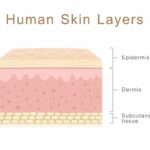SALIVARY GLAND DEFINITION
Salivary gland function and structure- The salivary glands in the mouth of mammals are called exocrine glands that produce saliva through a system of ducts present in the mouth.
TYPES OF SALIVARY GLAND
Mainly there are three pairs of salivary glands that release saliva into the oral cavity. The mucosa of the salivary glands and the lining of the mouth cavity is an aqueous transparent and tasteless liquid of the secretions of both the secretory glands. In which minerals, salts, lysosomes, and enzymes called ptyalin are found. Uric acid has no function in its digestive function but is excreted through saliva as a wasted substance.
There are two types of saliva, a thin watery liquid that softens food so that it can pass through OESOPHAGUS easily. The second saliva is a little thicker, which acts as a lubricant, makes the walls of OESOPHAGUS smooth, and by adding food together, it creates a food mass called a bolus. Saliva contains digestive saline amylase, which starts breaking down the enzyme carbohydrate into small pieces. The starch which is POLYSACCHARIDE is converted into maltose which is DISACCARIDE. Saliva also benefits the tongue and teeth, without it the taste cells of the tongue cannot function properly. It has antibacterial properties that keep the mouth and teeth bacteria-free.
Salivary gland function and structure- There are 3 pairs of salivary glands left and right inside the mouth.


PAROTID GLAND: –
The gland is situated on the underside of the inner part of each ear. These are the largest glands called parotid glands. In each gland, a long tube called the parotid duct opens near the second molar tooth within the cheek skin. Through these tubes, the effluent of the parotid gland containing water, salts and salivary amylase comes into the mouth.
SUBMANDIBULAR GLANDS:-
These glands are each one below the mandibular or lower jaw. It is almost litchi-shaped and is about half the size of parotid glands. Its tube called the submandibular duct opens behind the lower incisor teeth in the papilla on both sides of the organism. These glands are water, saline, salivary. , Secretes amylase and mucin, which comes in the mouth through the submandibular duct.
SUBLINGUAL GLANDS:-
These glands are on both sides of the tongue at the bottom of the mouth. It is the smallest gland. From each gland, several small vessels arise, which open just behind the perforation of the submandibular duct on both sides of the tongue. These glands mostly release water, salts, and mucin. Their secretion is stickier than the secretion of other glands. There is an excess of mucus and a deficiency of salivary amylase.
FUNCTIONING OF SALIVA:-
Saliva contains about 99 percent water and one percent electrolytes and protein. Proteins contain mucin, which helps to make mucus, and an enzyme called salivary amylase. The mucin interacts with the water present in saliva and produces very smooth mucus, which moistens and lubricates the food, causing it to descend into the esophagus and esophagus during swallowing food. Salivary acts quickly on amylase carbohydrates and converts them into maltose and dextrin. This enzyme becomes inactive after a few moments after the secretion of gastric juice because the gastric juice is acidic and acid neutralizes the base. Saliva does not contain enzymes that break down fat and protein.
Saliva cleanses the mouth and teeth and does not allow the liquid to accumulate, which damages the teeth, keeping the oral tissues soft and moist. The merging action of saliva produces a taste sensation because the taste buds on the tongue are stimulated only after the food is mixed with saliva.
THE SECRETION OF SALIVA: –
To keep the mouth and throat completely wet, the secretion of saliva continues continuously, which is due to the stimulation of the spontaneous nervous intestines present in the salivary glands. In addition to this small amount of saliva secretion, the saliva effect is often increased by placing food in the mouth, chewing, and just smelling, tasting, seeing, or thinking about the food. Saliva secretion is under the control of the perfect autonomic nervous system. Most of the stimulation of all red glands comes from the parasympathetic system. Anorexia-related food stimuli, such as foul-smelling foods, inhibit the functioning of the parasympathetic system, causing the mouth and cheeks to become dry. The main appears to be dry even under stressful conditions.
READ MORE- Second wind and oxygen debt common term used in sports training
https://www.sportzyogi.com/second-wind-and-oxygen-debt/





